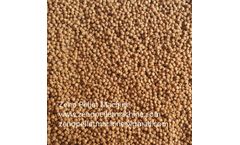Refine by
Auxin Articles & Analysis
11 articles found
Classification of Plant Hormones Plant hormones can be classified into several major types, each with distinct functions that contribute to various physiological processes: Auxins: Primarily found in young, actively growing tissues, auxins, such as indole-3-acetic acid (IAA), are pivotal in regulating cell elongation, directional growth, root initiation, and the ...
The primary classes of plant hormones include auxins, gibberellins, cytokinins, abscisic acid, ethylene, jasmonates, brassinosteroids, and salicylates. ...
The following are several examples of plant hormones used as plant growth regulators. Auxins used as plant growth regulators Auxins are a group of plant hormones that are used as plant growth regulators to regulate plant's growth by stimulating cell elongation in stems. Auxins also play a significant role in fruit development, lateral branch ...
One area where there has been a tremendous development in recent years is the discovery and application of auxins in the agricultural industry. This article aims to provide a comprehensive overview of what auxins are, their applications, and the advantages of using them. Introduction of Auxins Auxins are a class of plant growth ...
The metabolism activity of the tree from flowering till the harvest is essential to ensure the highest possible commercial yield. Metabolism linked to fruit growth has to be supported by the energy of the plant. If not, the caliber will be scarce and irregular at harvest. Supporting the energetic production and transport into the plant is thus ...
Corn meal 70%, fish meal 10%, soybean meal meal 15%, bran 5%, the additives are (based on the total basal diet): sweet potato flour 12%, salt 0.50%, auxin 2%, phosphoric acid Hydrogen calcium 2%, feed coefficient 4.80. 3. Sweet potato vine powder 80% , soybean meal powder 15% , bran 5%, added according to the total basic diet: sweet potato powder 12%, salt 0.50%, ...
” Recent research has shown that Stimplex, rather than directly providing auxins and cytokinins, induces the plant’s own production of these natural growth compounds. ...
In response to the widespread occurrence of weed species resistant to glyphosate, biotechnology companies have developed crops resistant to the synthetic‐auxin herbicides dicamba or 2,4‐D, and once commercialized, adoption of these crops is likely to change herbicide‐use patterns. ...
The secret of patterning is thus the combination of a common cell wall connection and a slight difference in concentration of the plant hormone auxin. The genetic circuit that was discovered by these researchers than makes sure the four cells further develop into a complete vascular tissue containing distinct cell types. The researchers could further show that local activity of ...
Recent advances in biotechnology have produced cultivars of corn, soybean, and cotton resistant to the synthetic‐auxin herbicide dicamba. This technology will allow dicamba herbicides to be applied in new crops, at new periods in the growing season, and over greatly expanded areas, including postemergence applications in soybean. ...
The possibility of regulating productivity of potato plants by applying the promising analogues of auxin compounds TA-12, TA-59, LN-14, LN-16 has been proved experimentally. ...









